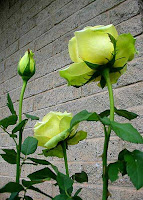 There are many ways to make money online with photography, but a popular and fairly new way is through Micro Stock Photography websites.
There are many ways to make money online with photography, but a popular and fairly new way is through Micro Stock Photography websites.Micro stock photography is simply stock photography that's sold at deep discounts. Clients are able to license stock photos for just $1 or $2, and photographers earn money each time a client chooses one of their photos.
Micro stock photography is considered to be still in it's infancy, and some people feel it's wrong to sell photography at such low prices. Particularly since many professional photographers invest a lot of time and money on equipment, learning, and photo shoots.
For the beginning photographer though, micro stock photography agencies can be ideal places to start. Since entry requirements are not overly restrictive, many hobby photographers with inexpensive cameras have already started making a nice second income from their pictures.
How Does It Work?
The process of making money from your photography through micro stock agencies
is fairly simple.
1. Research popular micro stock photography agencies online. There are quite a
few of them, but you'll want to start with just one or two until you get the hang
of things.
2. Choose your absolute best pictures to submit. Some agencies require you to
submit 10 pictures for review when you apply for an account with them, while
others only require three the first time. Most don't have minimum requirements
though, and you can start by submitting just one.
3. Your pictures will be reviewed by humans, and accepted or rejected into the
micro stock photography site. If they're accepted, they'll be available for
clients to "buy".
Technically they're not fully buying your pictures though. They're simply licensing the pictures for specific use. Usually micro stock photography is used in websites, though sometimes it's used in advertisements, brochures and other marketing materials. The photographer always retains full copyrights to their photos though, and is normally able to sell the same photos over and over again to additional clients.
And this is the beauty of stock photography. Once you've taken a great picture and had it accepted into a stock photography portfolio, that one picture can continue earning you money month after month . . . sometimes year after year.
Most micro stock photography agencies pay $0.20 - $0.50 per picture license, or download. This may not seem like much, however a good photographer with several hundred pictures for sale could make a nice second income over time, because it all adds up!
There's a lot more to the stock photography business, which we don't have room to cover in just one article. You'll find expanded details about making money with stock photography in this article though:
"Can Photographers Make Money With Stock Photography?"
© 2006, Kathy Burns-Millyard. http://www.Stocktography.com is a new, free online guide to Royalty Free Stock Photography. New articles are being added frequently so please visit, bookmark and enjoy. For more great content like this that you can legally modify and add your affiliate links and name to, please see The Guru Gazette Private Label Content Packages
Article Source: http://www.EzineArticles.com



















































